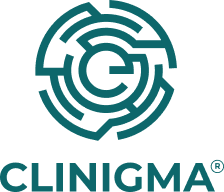Qualitative research in drug development: Enhancing patient-centered clinical trials and regulatory outcomes

The role of qualitative research in drug development has become increasingly prominent in shaping how studies are designed, implemented, and evaluated. By applying methods such as interviews and focus groups, sponsors can capture insights that align treatments and study designs with real-world needs. These approaches not only enhance patient understanding but also address regulatory expectations for inclusivity and transparency throughout the development process (FDA PFDD Guidance, 2020; EMA PRO Guidance, 2016).
This article examines how qualitative methods contribute to meaningful outcomes across drug development—from early concept exploration to post-marketing evaluation—and their growing influence on healthcare innovation.
The Role of Qualitative Research In Drug Development
Patient participation is often challenged by barriers such as complex protocols, travel burdens, and limited communication, which can reduce involvement (George et al., 2014; Treweek et al., 2013). Feedback from participants, including qualitative insights, can help sponsors address these challenges by identifying ways to make studies more accessible. This can lead to improved participant recruitment, retention, and experiences.
In addition, insights from patients regarding side effects or other treatment challenges can inform refinements in drug delivery mechanisms or dosing schedules, improving alignment with patients’ daily lives. These adjustments not only support enhanced overall trial outcomes but may also contribute to regulatory approval processes. Demonstrating real-world quality-of-life improvements during health technology assessments (HTAs) can be an important step in gaining favorable reimbursement decisions (NICE HTA Guidelines, 2019; ISPOR PRO Best Practice Report, 2017).
Regulatory bodies, including the FDA, continue to advocate for the incorporation of patient-reported insights into trial design and drug development strategies (FDA Guidance on Patient Experience Data, 2022). While patient experience data has long been integral to clinical research, it is increasingly recognized as a key factor in optimizing both trial design and drug positioning for regulatory evaluation.
What is Qualitative Research in Drug Development?
Qualitative research provides narrative-driven insight into human experiences surrounding disease, treatment, and healthcare systems. In the context of drug development, it complements quantitative evidence by explaining the “why” behind behaviors, decisions, and perceptions (Pope & Mays, 2020; Green & Thorogood, 2018). It can be applied throughout development—from concept elicitation and endpoint development to usability testing, real-world evidence collection, and post-market assessment. In drug and device development, qualitative research generally takes two complementary forms:
· Embedded qualitative methods within active clinical trials — integrating patient feedback into protocol design and ongoing study procedures.
· Qualitative research conducted outside the trial process — gathering Real World Evidence (RWE) through interviews, focus groups, and observational studies that reflect everyday healthcare realities.
Using both helps researchers understand not only whether a treatment is effective—but also whether it is acceptable, usable, and meaningful to patients in real-world contexts.
1. Embedded Patient Experience Data Collection in Clinical Trials
Embedded methods collect feedback while patients are enrolled in a study:
· Semi-Structured Interviews (During Trial) — Balancing open-ended exploration with standardized prompts, these interviews can explore, for example, patient-specific barriers, coping strategies, meaningful change, and perspectives on benefit–risk trade-offs while treatment is ongoing.
· Concept Elicitation Interviews — Conducted early in trial development, these discussions identify symptoms, impacts, and outcomes that participants consider relevant. The findings can inform endpoint selection and the creation or adaptation of patient-reported outcome (PRO) instruments.
· Cognitive Debriefing (During Trial) — Conducted during protocol design or early enrollment, cognitive debriefing asks participants to review trial materials (informed consent forms, PRO questionnaires) to identify confusing or ambiguous language. The goal in the embedded context is to improve comprehension before data collection begins, ensuring accurate and consistent measurement.
2. Qualitative Research Outside of Clinical Trials (Real World Evidence)
These RWE-focused methods provide insights independent of the trial setting, reflecting how patients, caregivers, and clinicians experience treatments in routine care:
· Focus Groups — Group discussions that collect perspectives from patients, caregivers, and healthcare providers. They can be used before a trial to identify needs and preferences, or after a trial to contextualize findings.
· Ethnographic Studies — Field observations examine how treatments fit into daily routines and social contexts, capturing challenges not always visible in trial environments.
· Semi-Structured Interviews — Conducted outside a controlled study setting, these allow participants to speak openly about topics such as practical barriers to access, variations in care delivery, and their personal benefit–risk assessments.
· Cognitive Debriefing in RWE Studies — In the real-world evidence context, cognitive debriefing examines how patients interpret healthcare materials such as patient education resources, prescription instructions, or disease management tools used in everyday care. The aim is to improve clarity in non-trial healthcare contexts.
By embedding methods like concept elicitation and cognitive debriefing inside clinical trials, sponsors can ensure protocols, materials, and endpoints are aligned with patient priorities.
When similar techniques are applied in RWE research, the emphasis shifts to understanding how treatments, information, and support systems work (or fail) in the complexity of everyday healthcare.
Together, these patient-centered qualitative approaches improve inclusivity, optimize trial design, validate real-world performance, and increase the likelihood that medical innovations will meet genuine patient needs.
The Impact of Qualitative Research on Regulatory Decisions and Patient Outcomes
Qualitative methodologies play an increasingly strategic role in drug development by generating evidence that supports regulatory submissions, labeling claims, and market access. Regulatory agencies such as the FDA and EMA recognize the value of qualitative insights in demonstrating treatment relevance, usability, and meaningful change (FDA Patient Experience Data Guidance, 2022; EMA Reflection Paper on PROs, 2014).
These methods inform every stage of the process—from endpoint justification and PRO development to understanding post-marketing safety perceptions—helping to connect regulatory evidence with lived experience and real-world effectiveness.
In addition to regulatory requirements, qualitative research influences the practical application of treatments. In practice, qualitative data can also inform adjustments to delivery mechanisms, usability, and accessibility (NICE HTA Guidelines, 2019). Such adjustments ensure that treatments address the practical needs of patients, improving adherence and promoting favorable long-term outcomes.
When qualitative data is combined with other forms of patient-centered evidence, it can provide context for understanding both clinical trial results and real-world use (ISPOR PRO Best Practice Report, 2017). This integrative approach supports healthcare innovations that focus on patient needs while meeting scientific goals.
Challenges in Conducting Qualitative Research
While qualitative research provides valuable insights, it also presents challenges that require thoughtful planning and execution.
· Subjectivity and Interpretation: Participants may interpret questions in varied ways, and their responses can be shaped by personal biases or circumstances such as stress or fatigue. Similarly, interviewer bias—whether intentional or unintentional—can influence how questions are framed and responses understood. Utilizing standardized frameworks and providing comprehensive training for researchers can help mitigate such risks.
· Logistical Complexities: Conducting qualitative research often demands substantial time and resources. This includes creating effective interview protocols, transcribing extensive datasets, and performing thematic analyses meticulously. Additionally, recruitment for diverse participant groups—particularly in rare disease populations—can pose significant hurdles.
· Trial Integrity: Ensuring that embedded qualitative research methods, such as patient interviews, do not disrupt the trial’s protocol or compromise its integrity is a crucial consideration. Researchers must design qualitative methods to complement clinical investigations while avoiding issues like recall bias or participant fatigue, which can lead to dropout or skewed findings.
Despite these obstacles, innovations such as virtual tools and strategic planning help address these challenges. When approached thoughtfully, qualitative research produces meaningful and reliable insights that support clinical study objectives.
Conclusion
Qualitative methods play an increasingly important role across the stages of drug development by providing context and depth to quantitative findings. When used from early concept exploration through post-approval evaluation, they help researchers understand how treatments are perceived, used, and experienced in real-world settings. Integrating qualitative approaches alongside traditional evidence can support more informed decision-making and promote a clearer understanding of the factors that shape clinical and regulatory outcomes.
References
EMA. (2014). Reflection paper on the use of patient-reported outcome (PRO) measures in oncology studies. European Medicines Agency.
EMA. (2016). Guideline on the use of patient-reported outcome (PRO) measures in clinical trials. European Medicines Agency.
FDA. (2020). Patient-Focused Drug Development: Methods to identify what is important to patients—Guidance for industry, FDA staff, and other stakeholders. U.S. Department of Health and Human Services.
FDA. (2022). Patient experience data in medical product development: Guidance for industry, FDA staff, and other stakeholders. U.S. Department of Health and Human Services.
George, S., Duran, N., & Norris, K. (2014). A systematic review of barriers and facilitators to minority research participation among African Americans, Latinos, Asian Americans, and Pacific Islanders. American Journal of Public Health, 104(2), e16–e31. https://doi.org/10.2105/AJPH.2013.301706
Green, J., & Thorogood, N. (2018). Qualitative methods for health research (4th ed.). SAGE Publications.
ISPOR. (2017). Good Practices for Outcomes Research: Incorporating patient-reported outcomes into health technology assessment. International Society for Pharmacoeconomics and Outcomes Research.
National Institute for Health and Care Excellence. (2019). Guide to the methods of technology appraisal. NICE. https://www.nice.org.uk/process/pmg9
O’Cathain, A., Murphy, E., & Nicholl, J. (2010). Three techniques for integrating data in mixed methods studies. BMJ, 341, c4587. https://doi.org/10.1136/bmj.c4587
Patrick, D. L., Burke, L. B., Gwaltney, C. J., Leidy, N. K., Martin, M. L., Molsen, E., & Ring, L. (2011). Content validity—Establishing and reporting the evidence in newly developed patient-reported outcomes (PRO) instruments for medical product evaluation: ISPOR PRO Good Research Practices Task Force report: Part 1—Eliciting concepts for a new PRO instrument. Value in Health, 14(8), 967–977. https://doi.org/10.1016/j.jval.2011.06.014
Pope, C., & Mays, N. (2020). Qualitative research in health care (4th ed.). Wiley-Blackwell.
Treweek, S., Lockhart, P., Pitkethly, M., Cook, J. A., Kjeldstrøm, M., Johansen, M., ... & Mitchell, E. D. (2013). Methods to improve recruitment to randomised controlled trials: Cochrane systematic review and meta-analysis. BMJ Open, 3(2), e002360. https://doi.org/10.1136/bmjopen-2012-002360






